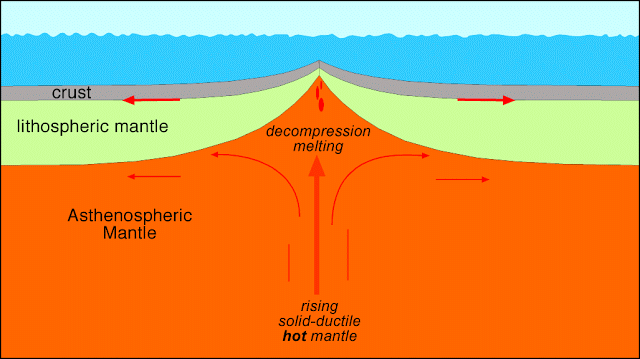
Lip reading normally involves deciphering speech patterns, movements, gestures and expressions just by watching a person speak. Planet Earth has LIPS, too – they are an acronym for Large Igneous Provinces, huge accumulations of igneous rocks that form when hot magma extrudes from inside the Earth and flows onto the surface of the seafloor under several kilometres of water.
An international team of scientists including University of Sydney geophysicists Professor Dietmar Müller, Dr Simon Williams and Dr Maria Seton from the School of Geosciences have found a novel way to ‘read the Earth’s LIPS’. Their findings are reported in a Nature Geoscience article in which they show for the first time that LIPS have a close working relationship with underwater mountain ranges called mid-ocean ridges.
LIPS are known to form at hotspots where hot cylindrical upwellings called plumes are rising from the deep Earth’s interior, intersecting the surface.
Professor Müller explains: “Conventional wisdom has it that these plumes, and their associated catastrophic LIPS, have no relationship to mid-ocean ridges where the slow divergence between tectonic plates gives rise to volcanism that steadily and continuously generates new ocean crust.”
Now the research team has uncovered a previously missed connection between LIPS and mid-ocean ridges. They found that mantle plumes can anchor mid-ocean ridges over long periods of time, leading to a connection of mid-ocean ridges and hotspots that cannot easily be broken up.
This attraction of mid-ocean ridges to plumes promotes successive eruptions of LIPS near mid-ocean ridges over long time periods, resulting in a myriad of igneous extrusions on top of and next to each other.
“It is important in our understanding of LIPS in the ocean basins, as it means that not all LIPS form as giant eruptions over very short times, as was originally thought,” said Dr Williams.
Unlike massive eruptions on continents, the undersea eruptions are not catastrophic and are unlikely to have caused mass extinctions and climate change. However, they are just as impressive in terms of volume.
Dr Seton adds: “It means that LIPS in the oceans are less dangerous to life on Earth, as they trickle out in many successive eruptions, not just one giant outpouring of lava, as LIPS on continents.”
“The findings change our understanding of massive volcanism deep in the ocean basins”, said Professor Müller. “For example, the Kerguelen Plateau in the southern Indian Ocean, is over twice as big as New South Wales, and has acquired its massive size over tens of millions of years, whereas the similarly large Siberian Flood Basalts wiped out the majority of marine and land species on Earth within just 60,000 years.”
Reference:
Long-term interaction between mid-ocean ridges and mantle plumes, Nature Geoscience 8, 479–483 (2015) DOI: 10.1038/ngeo2437
Note : The above story is based on materials provided by University of Sydney.










